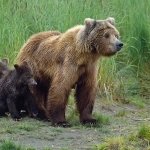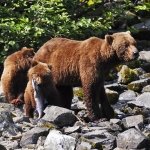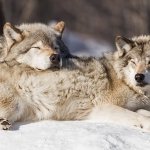
I had a license to kill a grizzly bear, but the intention to save one.
I flew from my home in Chicago to sail for 11 days along coastal British Columbia on a fall grizzly “hunt” with the Raincoast Conservation Foundation, a nonprofit working to protect grizzlies and their habitat.
On my trip, I shot bears only with my camera.
“We maintained our zero percent success rate,” said Brian Falconer, Raincoast’s Guide Outfitter Coordinator, about the bears killed on the foundation’s “hunts” since 2005.
My non-resident grizzly hunting license was one of two that Raincoast obtained this fall. Raincoast has purchased exclusive commercial hunting rights for 28,000 square kilometers in the Great Bear Rainforest near the First Nations communities of Bella Bella, Klemtu and Bella Coola.
The British Columbia government, which manages the hunts, requires non-residents to hire licensed guide outfitters with exclusive hunting rights. To maintain its tenure, Raincoast must take visitors on ostensible hunts.
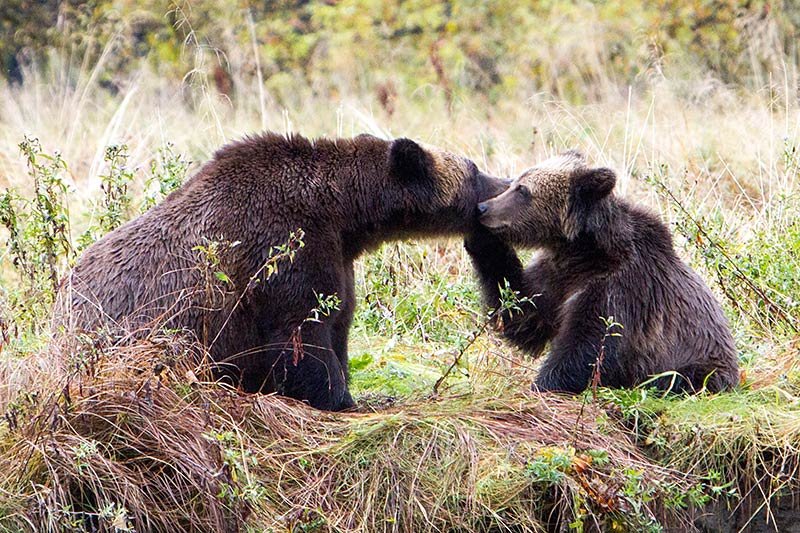
Grizzly Bear Mother and Cub nuzzling in the Great Bear Rainforest.
My guide outfitter was John Erickson. Erickson opposes grizzly hunting, as do 91% of British Columbians according to a September Insights West poll. Erickson explained the hunting rules, then I was free to peacefully observe.
Eleven of us sailed between waterfall-laden cliffs diving dramatically into majestic fjords. Humpbacks cast bubble nets around herring then rose together, open-mouthed, in choreographed rhythms to gorge. Orcas, in frenzied leaps, taught the pod’s youngest to hunt a porpoise.
We went ashore into river estuaries that pulsed with the tide and teemed with spawning salmon. Vegetation created a rich, fertile scent. This was bear country.
Fourteen grizzlies ambled through Kitasoo/Xai’Xais First Nations traditional territory, feasting on salmon, berries and roots, swimming and napping. A grizzly cub caressed its mother’s face with a paw, the mother gently nuzzling it. Another grizzly encouraged three cubs into the water to fish. Two grizzlies swam and wrestled playfully.
Bear viewing benefits both local and British Columbia economies. In grizzly estuaries, on the water amongst whales, and at black bear viewing stands, we saw visitors traveling with First Nations and other tour operators. Compared to bear hunting in the Great Bear Rainforest in 2012, bear viewing brought 12 times more in tourist spending and over 11 times more in direct revenue to the province, according to a 2014 Stanford University study.
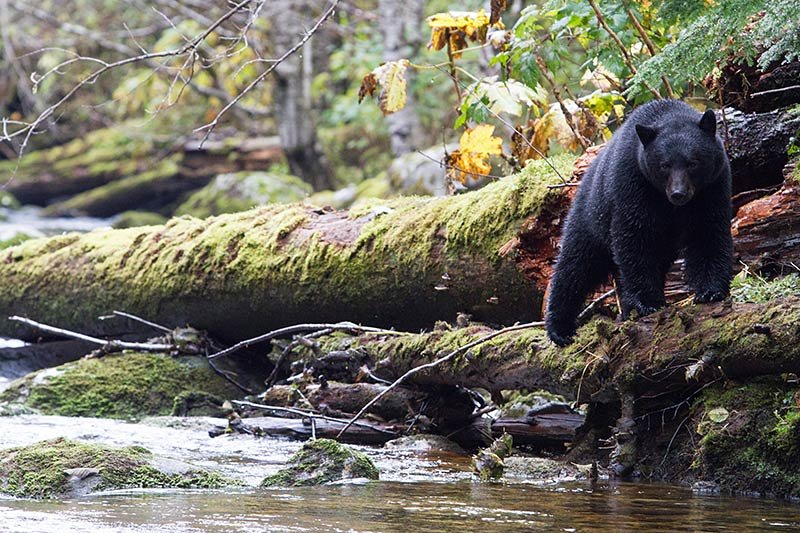
Black Bear fishing in the Great Bear Rainforest.
Some First Nations allow tourists to glimpse into their cultures. One misty evening, we became animals of the ocean and rainforest: ravens, wolves, killer whales and eagles, the animal clans of the Kitasoo/Xai’Xais. Children in Klemtu performed dances in the traditional Big House, and we visitors danced too.
Marven Robinson, Gitga’at Spirit Tours owner, took us to view black bears and the white spirit bear, a genetically anomalous black bear, in Gitga’at traditional territory. Robinson limits bear viewing as his “commitment to the river and the bears.”
We watched eight black bears leisurely pulling out the salmon that broke the surfaces of brown and silver streams in their quest to spawn.
For four quiet hours I sat mesmerized by a white spirit bear, also known as a Kermode bear, a symbol of ancient strength. She walked close enough that I could see splashing from the salmon tail dangling in her mouth.
A black bear fished upstream. If I had purchased a black bear tag, provincial law would have allowed me to kill it for only $180. Although hunting white-coated bears is illegal, some black bears carry the white recessive gene.
I would have had to shoot the black bear in front of 20 witnesses. The onlookers, coming from around the world to see the white bear, included film crews from Sweden and Alberta, and German and American photographers, carrying hundreds of thousands of dollars in camera equipment.
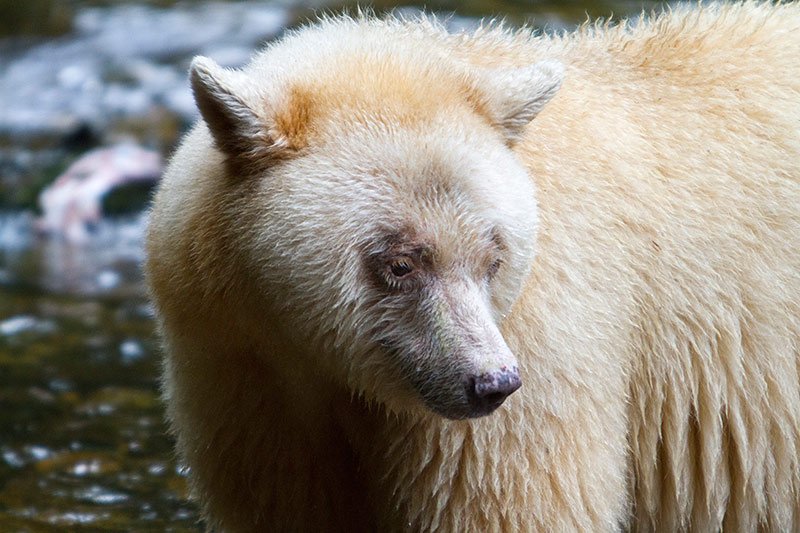
The beautiful and sacred Spirit Bear, also known as a Kermode Bear.
Our Gitga’at guides certainly would have intervened. In 2012, nine Coastal First Nations banned killing bears for sport in their territories. Although the provincial government does not recognize the ban, First Nations guardian watchmen confront trophy hunters in their territories, as described in the film Bear Witness.
Any harm to the bears would have been well documented. Independent filmmaker Brandy Yanchyk and director of photography Adam Greenberg, traveling on my “hunt,” are making a documentary about grizzly bear trophy hunting.
Sitting creek-side with other hushed and reverent spirit bear watchers, peace reigned over violence. The old growth forest, draped with green mosses, seemed alive as one organic magical being, moving with shifting light. I was small in this magnificent place. I felt deeply that our human role is symbiosis with the wild.

Grizzly Bear relaxing in the Great Bear Rainforest.
Trophy killing is unconscionable. Even if British Columbia bans grizzly hunting, other animals remain at risk: wolves, cougars, bobcats, lynxes and wolverines. To protect these animals, Raincoast has spent almost two million dollars acquiring hunting rights, and plans to buy the remaining rights, in the Great Bear Rainforest.
Instead of a bear carcass, a memento of destruction, I have photographs of the awe-inspiring: the mother grizzly nuzzling her child, a rare spirit bear fishing, orcas catching a porpoise, humpbacks bubble net feeding, and cliffs mystically appearing out of rainbows and shifting mist. These are my trophies.
By Rebecca Boyd
Rebecca Boyd is an environmental, energy and natural resources attorney living in the Chicago area.
Photo Credit
All photos taken and copyright owned by Rebecca Boyd. Her photos may be viewed at www.rebeccaboydphotos.com/British-Columbia.
Featured Image: Spirit Bear catching Salmon in the magnificent Great Bear Rainforest.
Source Article
This article was originally published in The Province newspaper in Vancouver and the Times Colonist newspaper in Victoria, BC.

